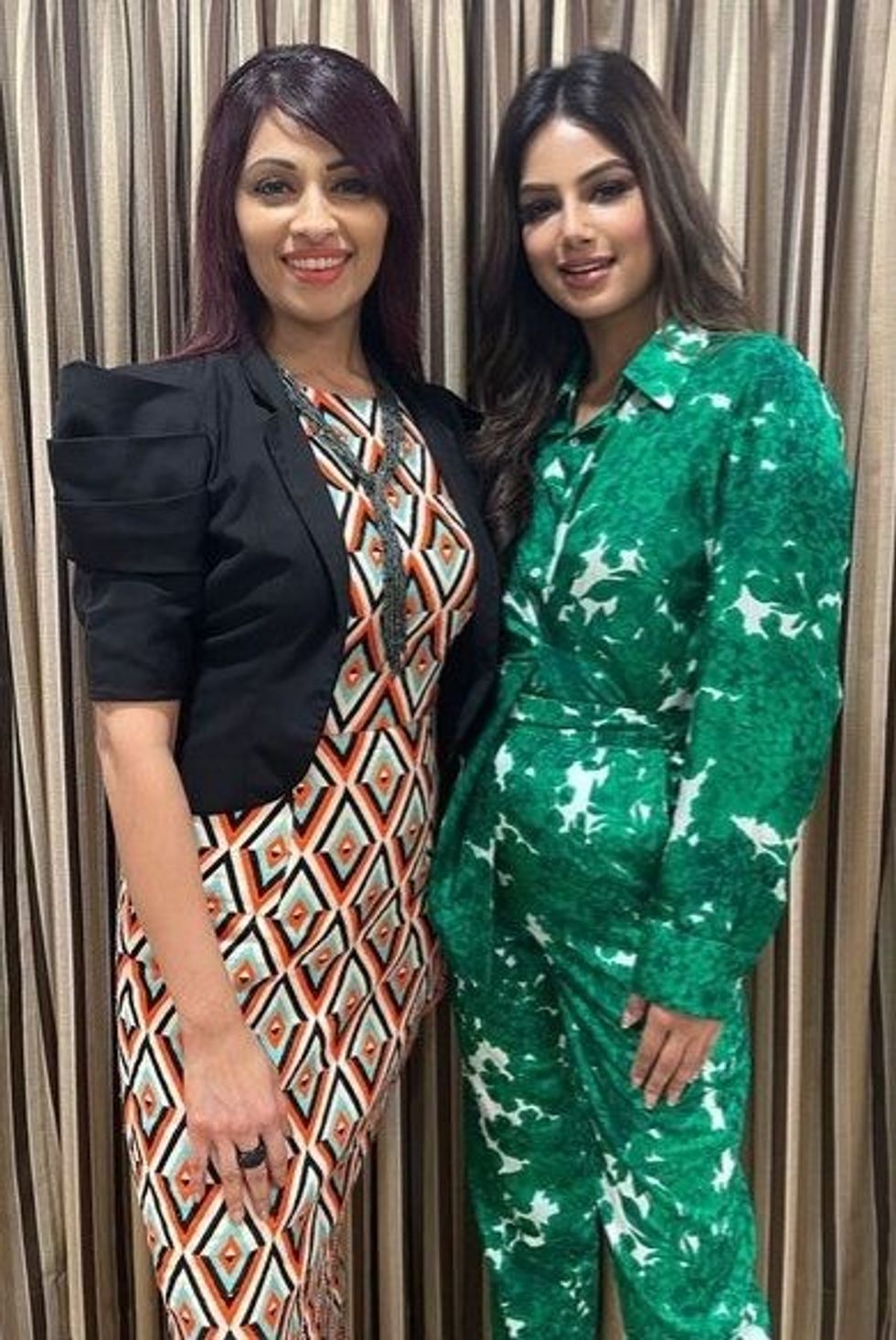WHETHER it is in the workplace, at home, while meeting someone new, resolving a conflict or in everyday life; clear communication is key in this ever-changing world and why Supreet Bedi is making a huge difference.
The communication trainer and pageant mentor’s transformative effect on others has included coaching Indian model Harnaaz Kaur Sandhu to the 2021 Miss Universe title.
Having lived in the UK, she went from successfully participating in a beauty pageant to moving to Mumbai in 2006 to hosting a popular TV show to becoming a full-time mentor and communication expert. Today, she balances life in UK and India as a TV presenter, hosts live events and is on the judging and training panel of the Miss India Organisation as their communication and diction expert.
Eastern Eye caught up with the award-winning professional to discuss her work, how she prepared Miss Universe to glory, secrets of communication in everyday life and key to confidence.
Tell us about your work preparing contestants for high profile pageants like Miss World, Miss Universe, and Mr World?
I focus on effortless delivery, accent neutralisation and articulation of thoughts. Given such high-pressure scenarios, a contestant’s spoken style often comes under the radar. So, I prepare them to sound purposeful yet natural without losing their train of thought and have an impactful demeanor throughout their stage presence. I also host a YouTube channel SUPAbility by Supreet Bedi, which has tips and tricks for successful voice representation.

How did you prepare Harnaaz Kaur Sandhu before her Miss Universe win?
Harnaaz was determined to win and had immense self-belief but was practical enough to know that she needed to polish her accent and pronunciation. It took dedicated sessions to rise above regional Punjabi influences and sound more international, without being unnatural. As I was in England, these sessions were conducted virtually! We worked on diction, pronunciation, tone and shaping thoughts. We also had philosophical chats that helped deepen her emotional quotient, while cross-referencing personal experiences. Over time, she showcased depth, compassion, empathy, and substance, which eventually got her the coveted crown.
How did you feel when she won?
I was teary and jumped with joy when her name was announced. I wanted her to find a balance of sticking to her roots, while aiming for the stars. She proved to be an ideal student! Harnaaz is all heart, and her warmth was evident that day. I’ve been her pillar of strength, a motivator when required and finally a mentor-turned-friend who awaited her victorious return with open arms.
How much of communication is connected to confidence?
Communication is confidence entirely. Our thoughts only become powerful when conveyed impressively. That belief should be evident in one’s voice. How you represent your thoughts will change society’s perception towards you. Be the voice that can make the change. Be crisp, be heard.
What advice would you give those who are not confident?
Shyness and lack of confidence usually stem from fear of judgement, which is so deep rooted that it often binds one’s potential. What will people think of me? Will I be able to impress? We tend to put a lot of unnecessary pressure on ourselves by building a wall of self-doubt around us. Be brave enough to break that wall.
What top tips would you give in terms of communicating and standing out?
Effective communication is a fine blend of visual, verbal, and vocal impact where factors like tone, volume, speed, pauses, stress, and intonation matter. Body language plays a crucial role – respect boundaries and emotions. Be clear in your speech and purposeful in your actions. Top it up with a beautiful smile and you’ve nailed it.
What about communication when dating?
The dating world is full of expectations, so my advice would be to highlight your strengths and hide your weaknesses. Dress well, maintain eye contact, lean forward during conversation to show interest, and smile often! Do not bare all – inhibitions, heartbreaks, and personal problems can wait. As honest as that might seem, it may be too daunting for the other person. Be in the moment. Soak in the positive vibe, give compliments and receive them graciously. Don’t be conscious or worry about where it’s going, just enjoy the company.
Is there any advice you can give for removing negative thoughts?
I tell my students to paint a mental picture of shackles each time negativity kicks in. The longer it houses itself in our mind the more bound we become. We are a victim of the ‘what if’ syndrome. What if the plan fails? What if I don’t win? All we need is a change of perspective – what if it does work? That glint in the eyes packed with a powerful smile will pave the way for positivity. Happy thoughts make happy people!
How do you deal with days you don’t feel confident or motivated?
I acknowledge them openly and tell myself it’s okay to feel low. Then I do what my
mood dictates – watch a film, go for a run, swim, eat out, spend time with my kids or even shed tears – whatever makes me feel better. Once I’m calm and have the power of reasoning, I figure out what is exactly bothering me and find possible solutions. If I feel underprepared, I get working as confidence shines automatically when we know our content well. Am I feeling stagnant? If so, I try adding another course or dimension to my profile.
What are your future plans?
I’m currently writing my first book on communication strategies, so it would be lovely to see myself as a best-selling author soon.
What inspires you?
I’m amazed by limitless human potential, so that ability itself inspires me. The power to change lives, use my voice for the greater good, be compassionate and add value. I wake up with such enthusiasm every day to embrace new possibilities and record new learnings that it all unknowingly becomes inspirational in many ways.
www.supreetbedi.com













